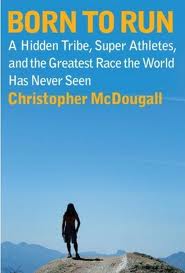 More thoughts on Christopher McDougall’s excellent book Born To Run: A Hidden Tribe, Superathletes, and the Greatest Race the World Has Never Seen (see “Born To Run: How to Run – For Fun?” Free Sport, 9/11/12).
More thoughts on Christopher McDougall’s excellent book Born To Run: A Hidden Tribe, Superathletes, and the Greatest Race the World Has Never Seen (see “Born To Run: How to Run – For Fun?” Free Sport, 9/11/12).
Extreme running, it appears, blatantly defies our collective conceptions regarding female, and older athletes. Both groups of which fare better than their male, and younger athletic counterparts when undertaking distance runs of 25, 50, and even 100 miles in length.
“We monitored the results of the 2004 New York City Marathon and compared finishing times by age,” Dr. Dennis Bramble, of the University of Utah, tells McDougall. “What we found is that starting at age nineteen, runners get faster every year until they hit their peak at twenty-seven. After twenty-seven, they start to decline. So here’s the question – how old are you when you’re back to running the same speed you did at nineteen?”
The answer? 64. Which means that a runner nearing her/his retirement age will run better than a runner in his/her early twenties. Which is just amazing. And unbelievably surprising.
“There’s something really weird about us humans,” continues Dr. Bramble, “we’re not only really good at endurance running, we’re really good at it for a remarkably long time. We’re a machine built to run – and the machine never wears out.”
And, Dr. Bramble points out, it’s true for women as well as men.
“Take this equation,” writes McDougall, “how come nearly all the women finish [the] Leadville [100] and fewer than half the men do? Every year, more than 90 percent of the female runners come home with a buckle [for successfully finishing], while 50 percent of the men come up with an excuse.”
(That would be 100 miles run at elevations between 9,000 and 12,500 feet above sea level. Air thin enough to wind most of us mortals as we make our morning coffee.)
And while women, on average, fare better than men, a couple of the standout performances are truly spectatcular. Like Emily Baer, who one year finished 8th out of 98 runners at the Hardrock 100, “while stopping at every aid station to breast-feed her infant son,” McDougall adds.
Or the outright legendary Ann Trason, who, McDougall writes, “went on to become the female champion of the Western States 100 – the Super Bowl of trail-running – fourteen times [italics his].”
“She smashed world records at 50 miles, 100 kilometers, and 100 miles, and set ten more bests on both track and road,” continues McDougall. “She qualified for the Olympic Marathon Trials, ran 6:44 a mile for 62 miles to win the World Ultra Title, and then won Western States and Leadville in the same month.
Nothing, as McDougall notes, about ultrarunning seems to make any sense. Rather, it’s like this “alternative universe where none of planet Earth’s rules [apply]: women [are] stronger than men; old men [are] stronger than youngsters; Stone Age guys in sandals [are] stronger than everybody.”
Which makes it all the more intriguing, as well.


